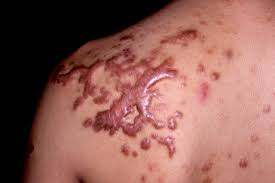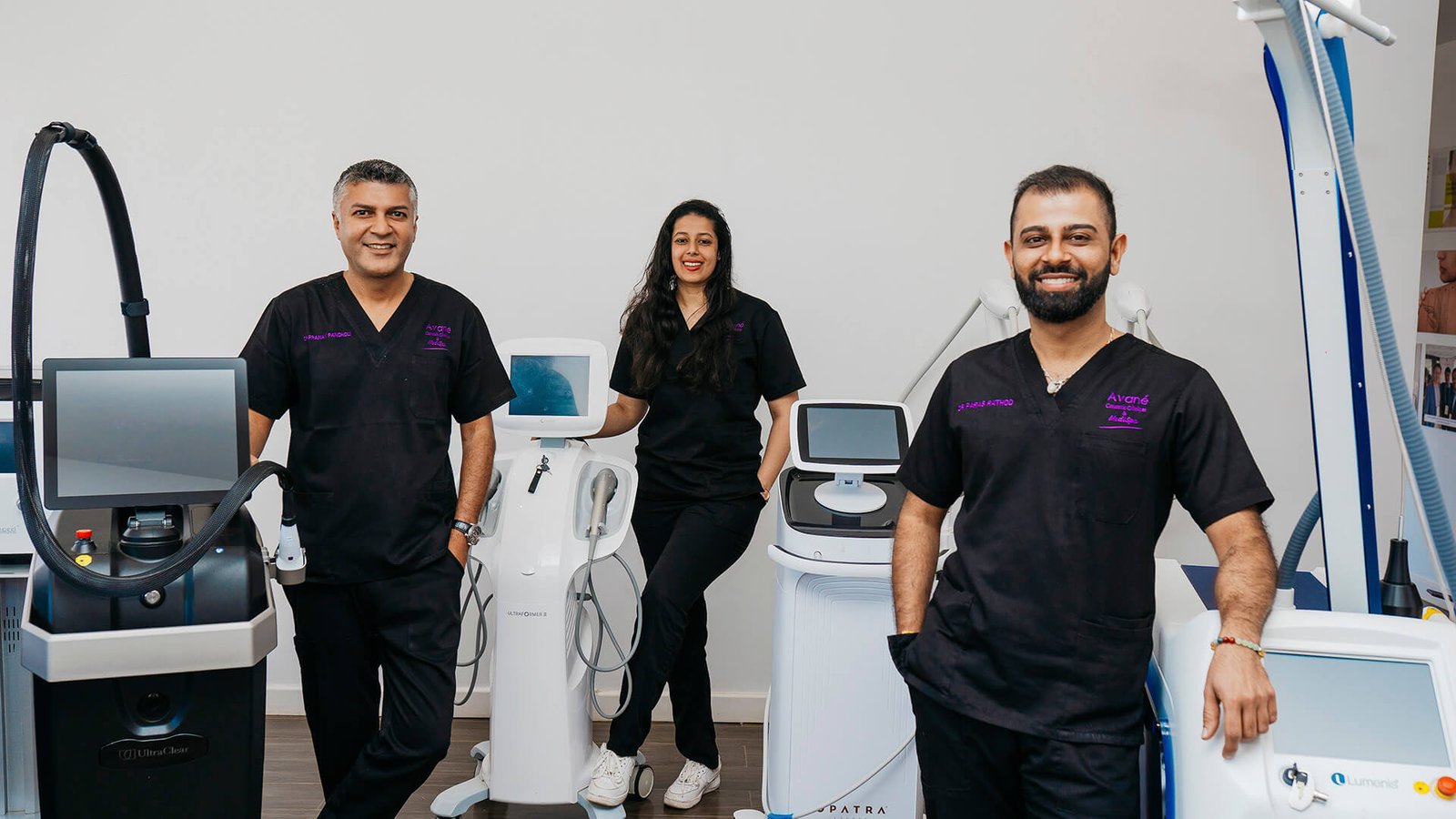When we think about our bodies, we can’t help but be fascinated sometimes by how interesting and intriguing they can be. We have this whole entity of different systems, all working in partnership to perform tasks that will keep us alive and in good health. The body’s defence system in particular can be fascinating. It fights off pathogenic material such as germs, bacteria and deadly viruses, to protect the body. However, there are times when the same defence system becomes overzealous and ends up causing more harm than good. This can lead to effects on the body, one of which is a skin condition called keloids.
Keloids or keloid scars are the harder, larger, thicker and more irregular scars that form on top of normal scars. When the skin is injured by burns, cuts, injuries, tears or blemishes such as acne, some scars form on wounds as they heal. Oftentimes, the scars heal, grow smaller and fade off over time. However, in some cases, the scars do not fade and fall off. Instead, they grow larger, and thicker and form extra scar tissue layer over the wounds. These lesions are called keloids. They can be unsightly but have no known health effects. However, they can be itchy and make you feel uncomfortable about them. There are rare instances, where keloids form on skin that hasn’t been injured. These are called spontaneous keloids, but they are extremely rare.

Keloids can form on any part of the body with wounds, scars or affected by acne. However, they are common on the face, shoulders, ears, neck, chest and back. Furthermore, they can also affect anyone, regardless of gender, age or ethnicity. Regardless, they are more common in people with dark skin tones and tan skin tones. This means that people of African, Asian, African-American and Hispanic descent are at a higher risk of getting keloids than others. Additionally, people who have had keloids before are at a greater risk of getting them again. Furthermore, younger people between 10 and 30 years are also at greater risk of getting keloids. Keloids can also be passed on from a family with a history of keloids.
Medical researchers have not fully understood what causes keloid scars. The scars, however, are linked to an overproduction of collagen tissues around wounds. This happens when fibroblasts overreact and produce extremely high levels of collagen in response to a wound. Fibroblasts are cells found in the connective tissue that secret collagen fibres. The excess production forces the accumulation of these fibres around the wound, forming the overgrowth. Keloids are not contagious, hence not transmittable from one person to another. They are also not cancerous. Keloids are treatable but have a high probability of recurring after some time. This is why experts advise on the importance of prevention over treatment of keloids.
One of the most significant qualities of keloids is their unsightliness, especially when they develop on parts where they are highly conspicuous. Some people feel insecure about their looks and how the keloid scars affect them. Moreover, they can have an impact on you psychologically, making you feel less beautiful and less confident. In addition to the aesthetic effects, keloids can also cause itchiness, pain and discomfort. They also cause limitations to movement and other mobility body functions. This happens when keloids develop on areas such as knees, elbows and other joints.

Diagnosis.
Keloids can take a toll on the physical, psychological as well as emotional well-being of a person. It is therefore important that they be diagnosed correctly since proper diagnosis is the base for effective treatment. For diagnosis, we recommend that patients visit our clinic, and consult with our able team of experts, who are led by Dr Pancholi. The medics will ask about your medical history, as well as your family history. Additionally, the medic will also perform a physical examination on your skin, and examine the scar. They check for the shape, size and growth pattern of the scar tissues. To be certain about the condition, the dermatologist also performs a biopsy test to ascertain that the lesions are not cancerous, and are not a result of nodular scleroderma or lobomycosis. The dermatologist will use all the findings to make a conclusive diagnosis and make recommendations for appropriate treatment.
Treatment.
- Wound care. These are best recommended for newer keloids. it involves compression dressings made from stretchy fabric or other materials. This method is also used after surgery to remove keloids. The aim is to reduce or prevent a scar by putting pressure on the wound as it heals. Such dressings need to be worn for 12 to 24 hours a day for 4 to 6 months to be effective.
- Corticosteroid cream. Applying a prescription-strength corticosteroid cream can help ease itchiness.
- Injected medicine. These are used for people with smaller keloids, where doctors recommend a solution for reducing the keloid’s thickness by shrinking them. It’s done by injecting the keloids with cortisone or other steroids. It takes a series of injections, done monthly for up to six months before seeing the scar flatten. Although they are effective the injections have possible side effects. These possible effects of corticosteroid injections are skin thinning, spider veins and a permanent change in skin colour (hypopigmentation or hyperpigmentation).
- Freezing the scar. This involves a cryotherapy procedure. Here, the keloids are frozen with liquid nitrogen, to reduce or remove them completely. This procedure might require repeat treatments based on the effectiveness of the prior one. It has possible side effects such as blistering, pain and loss of skin colour (hypopigmentation).
- Ligature: If a surgical thread can be tied around the keloid, your dermatologist may recommend this treatment. The surgical thread will gradually cut into the keloid, which can cause it to fall off. You’ll need to tie a new surgical thread around the keloid every two to three weeks.
- Laser treatment. Larger keloids can be flattened by pulsed-dye laser sessions. This method has also been useful in easing itchiness and causing keloids to fade. Pulsed-dye laser therapy is delivered over several sessions with 4 to 8 weeks between sessions. Your doctor might recommend combining laser therapy with cortisone injections. Possible side effects, which are more common in people with darker skin, include hypopigmentation or hyperpigmentation, blistering and crusting.
- Radiation therapy. Low-level X-ray radiation alone or after surgical removal of a keloid can help shrink or minimize the scar tissue. Repeat treatments might be needed. Possible side effects of radiation therapy are skin complications and, in the long term, cancer.
- Surgical removal. If your keloid hasn’t responded to other therapies, your doctor might recommend removing it with surgery in combination with other methods. Surgery alone has a recurrence rate of 45% to 100%.
Generally, keloids do not need to be treated. They should heal, flatten and fade on their own. However, due to possible inconveniences they cause, many patients seek to have them treated. At Avané clinic, Dr Pancholi will recommend one of the above or a combination of treatments to help you manage your keloids. As effective as these procedures might be, some involve possible side effects, that the doctor will discuss with you during consultation. Moreover, the keloid will likely re-emerge even after treatment. Finding a treatment that heals the keloids completely and guarantees non-re-emergence is hard. This is why dermatologists recommend preventing keloids, rather than banking on treatment.
Prevention
Keloid prevention involves avoiding possible causes of the scars. These include avoiding skin injuries through scratches, burns, cuts, allergies etc. Moreover, one should reduce their tattoos and body piercings. Avoiding cosmetic surgeries can also be helpful, to avoid unnecessary cuts and possible scarring. Treating injuries, immediately after they occur can also be helpful, no matter how minute the injuries are. Should you find yourself, with a wound, talk to your dermatologists about how best to dress and take care of it. This will help ensure proper wound care and prevent the development of keloids.
Take away.
Keloids are non-harmful medically. However, they can cause psychological, and emotional distress. It is therefore important to have them checked. Keloids can be a problem for a lifetime, due to their likelihood of recurrence. It is therefore important that you find quality treatment from qualified, certified, and well-experienced dermatologists. There is no better place to find these than at Avané clinic, Nairobi. We are a respectable medical and dermatology clinic, located at the Yaya centre in Nairobi, Kenya. Visit us at your convenience, consult with our doctors and start your treatment journey today. Furthermore, you can also contact us to make enquires about keloid treatment or to book your appointment.




